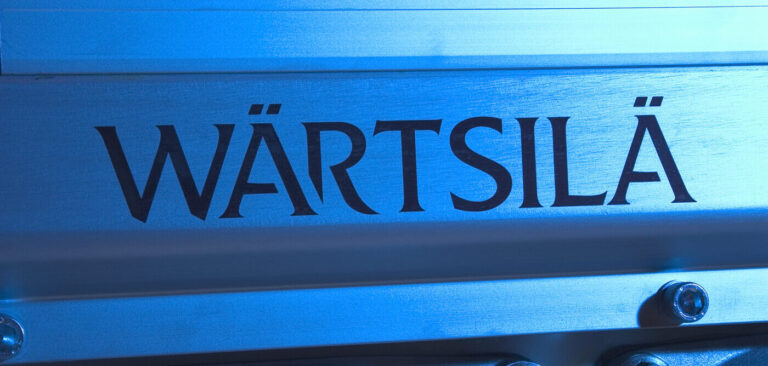Wärtsilä has announced it will launch a test program utilizing its fuel-flexible combustion engines to investigate the viability of hydrogen and ammonia as engine fuels for the maritime sector.
At present, the company’s fuel-flexible engines can run on natural gas, biogas, synthetic methane, or hydrogen blends of up to 25% hydrogen. In the future Wärtsilä aims to produce engines capable of transitioning to run on pure hydrogen and ammonia.
With both hydrogen and ammonia containing no carbon, the combustion process can be carried out without the release of any CO2 emissions. Wärtsilä has carried out several full-scale engine tests at the company’s engine laboratory in Vaasa, Finland, where a team investigated the optimum engine parameters for running on hydrogen and ammonia fuel mixtures.
The company stated that tests were positive, with one engine, running on a 70% ammonia mix, performing well at a typical marine load range. Other tests were conducted successfully on engines running on pure hydrogen. Wartsila plans to continue the testing of different fuels for several years, as it seeks to define the greenest fuel for use with internal combustion engine solutions.
Wärtsilä expects the company will have an engine running on an ammonia mix for the marine market before the end of 2021, with a view to providing an engine concept capable of running on pure ammonia fuel by 2023. Wärtsilä also estimates it will have an engine and plant concept for pure hydrogen operation ready by 2025.
“These are milestone moments in Wärtsilä’s transition to future fuels,” commented Håkan Agnevall, CEO of Wartsila. “Society will have to invest significant amounts into the infrastructure needed to develop green hydrogen, but those investments require market-ready engines that can run on the fuel once it is readily available. The energy and marine industries are on a decarbonization journey, and the fuel flexibility of the engines powering these sectors is key to enable the transformation.
“To achieve the transition to 100% renewable energy by the middle of the century, a significant amount of flexible balancing power is needed as a complement to ensure stable energy supply, when the sun is not shining, or the wind is not blowing,” continued Agnevall.
“There will be different balancing power technologies, but combustion engines and battery storage will be part of the core solutions. By developing engines that can run on green hydrogen, we are enabling that grid balancing can be done via a 100% renewable process, thereby enabling the energy systems of tomorrow.”



